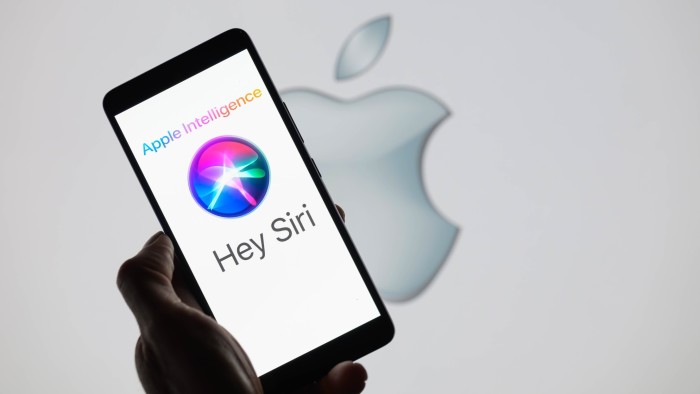Artificial intelligence may represent the biggest opportunity in tech since the arrival of the internet, but it also poses fundamental questions over how some of the industry’s most powerful companies make money.
Apple, which began rolling out Apple Intelligence last month, looks as well-placed for the AI era as anyone. In this field context is all. The data that Apple has about its users puts it in a powerful position.
But it has yet to show how adding AI to its devices can meaningfully change people’s lives — or prove that it can find new ways to make money from a technology that does not fit neatly into its old business model.
Reports this week that Apple is preparing to use AI for a new assault on the smart home is the latest sign that the technology could supercharge some existing tech markets. What isn’t so clear is whether this will also supercharge the company’s profits.
The new smart home push is likely to come in two parts. Next year, according to a report in Bloomberg, will see the launch of a six-inch, wall-mounted Apple screen that acts as a “hub” to control gadgets around the home. The following year, according to a well-regarded supply chain analyst, will bring Apple-branded home security cameras.
This would be Apple’s most important move in the smart home market since it launched HomeKit — software used to control gadgets around the home from Apple devices — a decade ago. It would also show that Apple is intent on populating your home with more of its own hardware, rather than just giving you a way to connect gadgets from other makers.
The first wave of smart home technology underwhelmed. The smart home turned out to be not very smart at all. Speakers such as Amazon’s Alexa-powered Echo and Apple’s HomePod achieved only a low level of language understanding. Customers also found it hard to set up and manage the networks of gadgets that the speakers were meant to help them control.
Like its main rivals, Apple is now betting that generative AI can breathe new life into this market. If the devices in your home could understand who is in a room or what is going on, they are more likely to be able to respond in useful ways.
Apple is well behind Amazon and Google, which already sell fleets of gadgets for the home. But it has some powerful things going for it, including a reputation for privacy and a record in seamless integration. Also, unlike Amazon’s Alexa, Apple devices are not likely to interrupt your home life with random offers of things you might want to buy.
The acid test will be whether Apple can apply AI in ways that people find truly useful. For the first incarnation of Apple Intelligence, much is riding on a feature known as App Intents. This will enable developers to “open up” their apps to Apple’s Siri assistant, essentially letting the AI automatically carry out functions inside the apps on behalf of a user.
You’re hungry but not sure what to eat? Just ask the Apple hub on the wall or the kitchen counter, and it will recommend a take away and instruct Uber Eats to place the order. As always with AI, the possibilities are easy to imagine, though reality often falls short.
Whether this can become a significant business for Apple is also unclear. Loyal Apple customers should pay some kind of premium for gadgets that fit seamlessly into their Apple-centric digital worlds. But it may be hard to achieve much differentiation with gadgets that are plugged in on the wall somewhere and seldom noticed. As the FT reported last week, Apple has just added a new warning in its official filings that its future products and services may never generate as much revenue or be as profitable as old hits such as the iPhone.
Apple also needs to show how it can use AI to supercharge its services revenue, which has become the main driver of its diminished growth. As devices around the home take over the management of more parts of peoples’ lives, it will need to persuade customers to pay up for new types of service that, for now, are hard to even imagine.
Today, there are only the first hints of what this might look like. A premium iCloud+ subscription, for instance, includes the ability to upload and manage encrypted video from HomeKit devices in Apple’s cloud.
Whether it can make features like this increasingly useful, and eventually peel them off to become standalone premium services, will be the ultimate test of Apple’s success in AI.
richard.waters@ft.com
























































































































































































You must be logged in to post a comment Login